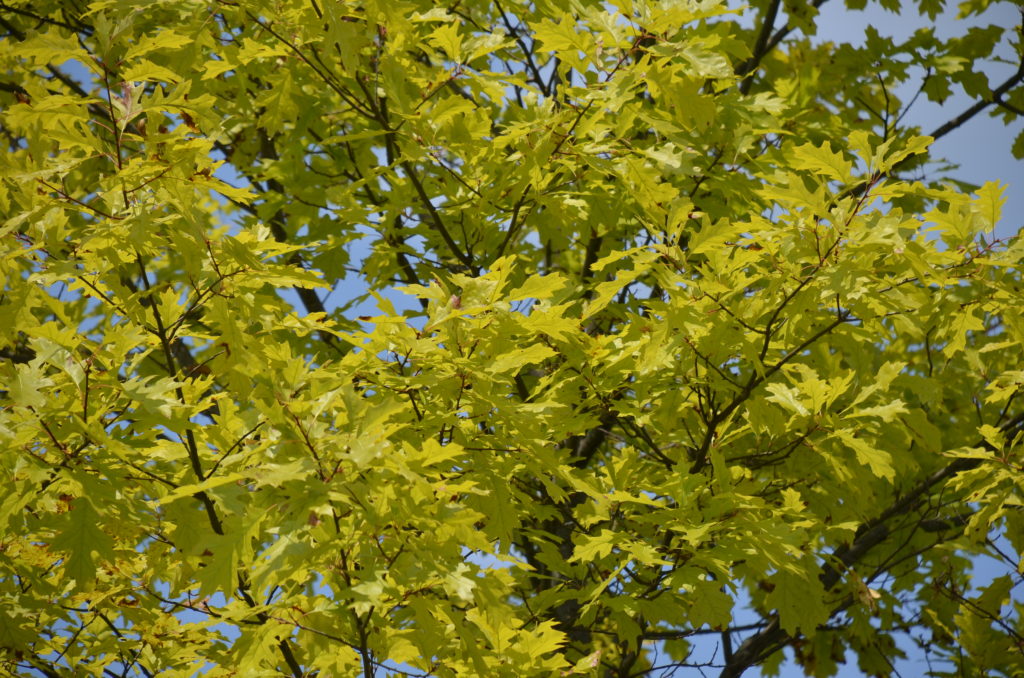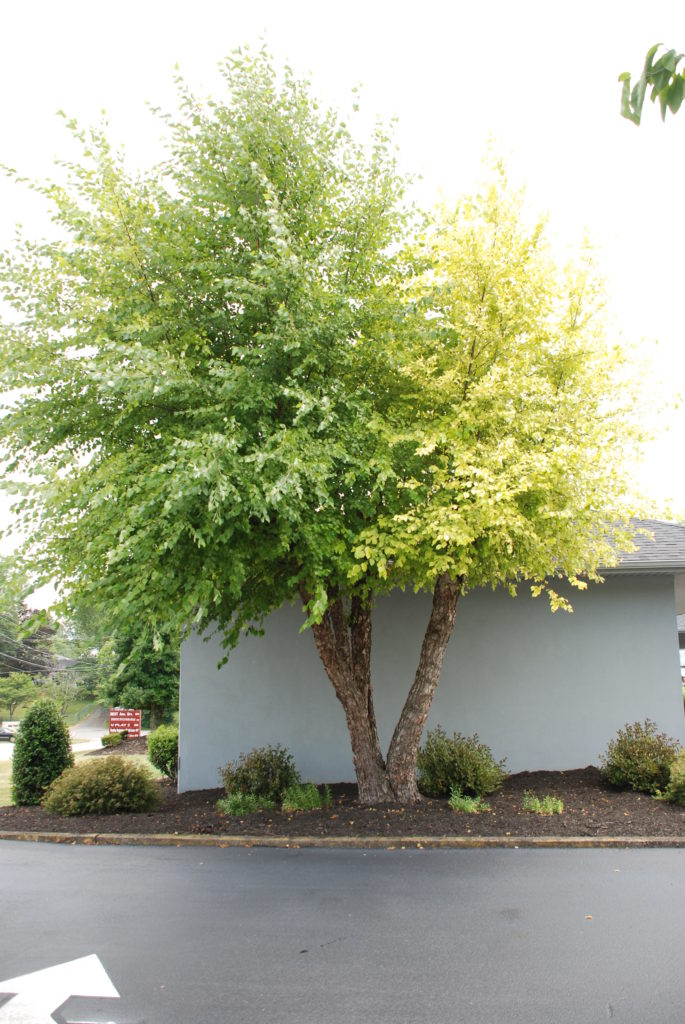
Leaves of some landscape trees turn yellowish- green color in the summer. The common cause for this malady is a lack of minor nutrients (“micronutrients”) that are essential for plant growth. These nutrients are available in the soil in very small quantities. Nutrient deficiencies are not common, except in the high pH soils, particularly the soils the central U.S. south to Texas.
Micronutrients include iron, manganese, zinc, copper, boron, silicon, and molybdenum. These are in contrast to macronutrients (nitrogen (N), phosphorus (P), potassium (K), calcium (Ca), magnesium (Mg), and sulfur (S), which are required in greater amounts and make up a larger portion of the plant tissue.
A bag of fertilizer (contains N, P, and K) and various forms of lime supply key macronutrients of (Ca) and (Mg). Soil pH plays a role in the availability of minor nutrients, particularly iron (Fe), manganese (Mn), and molybdenum (Mo). Micronutrient deficiencies also may occur when a plant’s root system is compromised, such as by injury, disease, poor site conditions, drought, or water-saturated soils.
Yellowing of the late spring or summer foliage is typically a symptom of a minor nutrient deficiency in specific landscape plants. As examples, look for mid-summer foliar yellowing (called “chlorosis”) on pin oak (Quercus palustris) and river birch (Betula nigra), and manganese deficiency on red and silver maples (Acer spp.).
Deficiency symptoms are marked by pale green or yellow leaves, with veins that remain green. As the deficiency is not corrected, new spring growth is stunted, branches may die back, and the leaf edges (margins) and interveinal areas of leaves may turn brown. In severe cases, the entire tree may decline over several years and die.

To avoid poor plant health caused by micronutrient deficiencies, test the soil before planting a tree and choose trees and shrubs that are tolerant of the high pH soil conditions. Foliar application of iron is a short-term treatment that can help trees appear more green and healthy in the current season, but must be applied later on when leaves have emerged. Repeated this fertilizer treatment annually.
Micronutrients injected into the trunk of the tree. These treatments help leaves to turn green within a week or two, and can last up to two years. Certified tree arborists can inject “liquid chelated iron” into holes drilled into the trunk of oaks and birch trees. Other products containing ferrous sulfate (iron / sulfur) may be fed directly into the soil around trees and shrubs also improves their foliar color.

 Posted in
Posted in 
